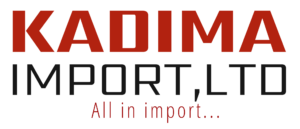Why currency hedging matters for importers
Strong currency hedging for importers is essential in global trade. When payments to suppliers are made in foreign currencies, even minor exchange rate movements can alter profit margins. A strong local currency may lower costs, while depreciation can raise import prices and disrupt financial forecasts.
By adopting a structured hedging policy, importers can anticipate exposure, secure predictable costs, and protect operating margins. This approach transforms currency risk into a manageable factor rather than an uncontrollable threat, improving financial stability and long-term competitiveness.
Financial instruments for managing exposure
The most common tool in currency hedging for importers is the forward contract. It allows businesses to fix today’s exchange rate for a future transaction, removing uncertainty about future costs. Forwards are cost-effective and easy to arrange, especially when payment schedules are clear, though they eliminate potential gains if rates move favorably.
Currency options offer flexibility by granting the right, but not the obligation, to buy or sell currency at a set rate. This ensures protection against unfavorable movements while allowing profit from beneficial shifts. For importers with uncertain payment dates, options provide adaptable and strategic coverage.
Advanced hedging may involve structured products such as collars, which balance protection and cost by setting upper and lower rate limits.
Operational and natural hedging strategies
Beyond financial products, importers can reduce exposure through natural hedging. This includes matching cash inflows and outflows in the same currency, sourcing materials from multiple regions, or negotiating supplier contracts that share exchange risk. Adjusting payment timing or invoicing currency can also mitigate volatility.
Regularly monitoring exchange exposure and using a layered hedging approach—distributing contracts across different maturities—helps optimize both flexibility and protection.
Governance and best practices
Effective hedging requires clear governance. Importers should define limits, responsibilities, and monitoring procedures. Working with reliable banks or FX specialists ensures transparent pricing, risk measurement, and alignment with business objectives.
When applied strategically, currency hedging for importers safeguards profitability, strengthens planning accuracy, and builds resilience against global market fluctuations.
Source: Trade Finance Global

